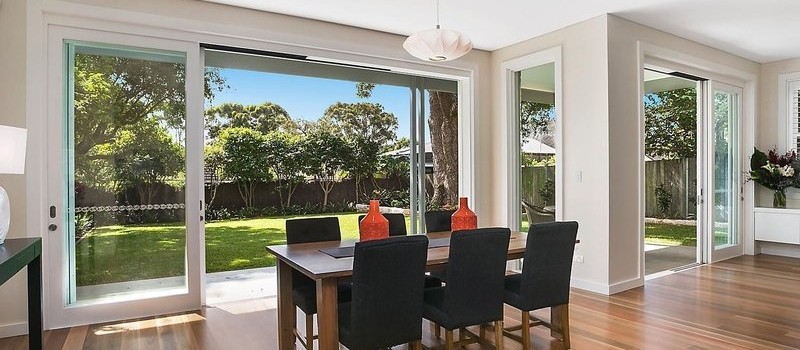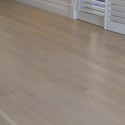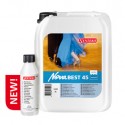If you cannot find an answer to your question here, please contact us.
|
Synteko Waterbase Problem Solver
|
||
|---|---|---|
|
Problem
|
Reason
/ Correct Procedure |
How
to Repair /Correct |
| Finish is too soft to be sanded | Always use Synteko Sealmaster as a sealer. Sealmaster dries quickly and is easy to screen back. |
Finish must dry for a longer period. Allow for adequate ventilation. Insufficient ventilation, too cold a surface. Allow for adequate ventilation. Heat floor surface. |
| Only screen or sand finish lightly. | ||
| Dark discolouration of wood & stains, or picture framing effect. |
Fine sand and buff timber floor evenly too close up grain, so that accumulations of sealer or stop marks do not appear. Maintain wet edge. | Most differences in colour disappear in the long run, otherwise it is necessary to re-sand and seal again |
| Spread sealer quickly & coat with grain and never coat against grain. |
||
| Edge of room appears to be slightly different in colour than rest of room. |
Caused by sanding edges differently to main part of floor/field. Generally, if timber surface of edges is rougher/different texture than centre of floor this will cause finish or stain to appear different to seal being absorbed differently to field. | See above |
| Lap marks in sealer | Sealer is drying too quickly. Keep a wet edge by overlapping within 5 minutes so that sealer edge will not dry and do not coat across grain. Do not over coat finish and avoid any draft while coating. |
With Sealmaster differences in colour should disappear after several minutes and screen back. |
| Maintain a wet edge and ensure that room temperature is not too hot or and no draft. Do not coat when there is a lot of sunlight on floor and keep windows and doors closed in high temperatures. Cooler conditions and restricted air flow will prolong drying time. Refer to Manufacturers specification sheet. |
If lap marks remain after finishing, re-sand to bare wood and seal again. |
|
| Too fast abrasion, scuffing and scratches. | Waterbased finish hardens slower than Synteko Classic or other solvent based finishes. Inadequate curing conditions. Finish surface is sensitive to scuffing, marring and surface damage for first four (4-6) weeks. Avoid rubber soles shoes, especially white ones from sliding across surface. |
Screen back with 150-180 grit or Virginia Blue Magic Pad, and re-coat again. |
| Treat hardwood floor surface carefully for initial 6 weeks |
See maintenance instruction sheet | |
| Furniture must be fitted with felt floor protectors. | ||
| Keep hardwood floor clean of grit and dust and vacuum or use a dust control mop daily. |
||
| Do not wet-mop floor for first month. Wipe all water spills immediately. | ||
| Pimples/impurities | Vacuum-clean well and tack with a damp cloth before finishing. |
Re-screen with 150-180 grit or Virginia Blue Magic Pad and finish again. |
| Keep windows closed until floor is re-coated. |
||
| Hardwood floor is too white and pale. | Waterbased finishes do not provide “warm” colour tone to dark hardwood timbers like Synteko Classic or other solvent based coatings. |
Sand down to bare wood, and recoat with alternative finish. |
| Hardwood timber naturally amber’s over years. |
||
| Wide cracks or gaps become visible on hardwood floor after some time, commonly known as “panelising”. |
Seal with Synteko Wood Filler, then prime with Synteko Sealmaster. |
Sand down to bare wood. Start with full trowel wood filler and sealer. |
| Always coat with a sealer first. Waterbased finish is flexible and causes adhesion between boards and panelising when it is used without a sealer. |
||
| Peeling of finish when recoating pre-finished flooring. |
Use Synteko Remover cleaner before screening of pre-finished flooring. |
Sand to bare wood, seal and recoat again. |
| Factory finish and waterbased finish may not be compatible. |
||
| Always test adhesion on a small area. | ||
| If adhesion is not satisfactory sand to bare wood and start with Sealmaster in usual way. |
||
| If wax containing products have been used for maintenance, sanding to bare wood is always necessary. |
||
| De-lamination or rejection on newly coated timber floor. |
Inadequate preparation of floor surface prior to apply subsequent coat. Water base finish has been coated over a solvent based sealer, solvent stain or the natural oils of the timber floor that have migrated to the surface, having settled on the newly sanded floor break the bond between the newly coated floor finish and the wood fibres. | Re-sand and seal the floor using a water base sealer or compatible stain. To minimize the natural oil settling on the surface minimise buffing, insure that the sealer is applied as soon as possible after sanding and tack ragging the newly sanded floor. Avoid waiting too long between the sealer drying and applying the first coat of water base finish. In addition insure that the sealer dries fast. |




